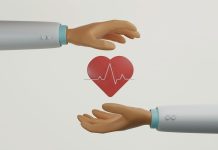
Recovering from a heart attack can be a challenging journey, but with the right approach, it’s possible to regain strength and even improve long-term health.
Incorporating safe exercises and adopting healthy lifestyle habits play crucial roles in this recovery process.
Here’s what you need to know about getting back on track after a heart attack, presented in plain language for ease of understanding.
A heart attack occurs when the flow of oxygen-rich blood to a section of the heart muscle suddenly becomes blocked.
If not quickly restored, the heart muscle begins to die. Recovery from such an event involves both healing the physical heart and making broad lifestyle adjustments to prevent future incidents.
Exercise: A Cornerstone of Recovery
Starting an exercise program after a heart attack might sound daunting, but it’s a vital part of recovery. Exercise improves heart health by strengthening the heart muscle, improving blood circulation, and helping you lose weight. It also significantly reduces the risk of another heart attack.
The key to integrating exercise into your recovery is to begin slowly and increase activity levels gradually, based on medical advice and under professional supervision. Typically, this starts with light activities, such as short walks, gradually building up to more structured exercise programs.
Cardiac Rehabilitation: Guided Exercise Programs
Cardiac rehabilitation is a medically supervised program designed specifically for individuals recovering from heart attacks. Research strongly supports the benefits of participating in cardiac rehab.
It reduces the risk of future heart problems and deaths related to heart disease. Programs typically include tailored exercise plans, education on heart-healthy living, and counseling to reduce stress.
Studies, such as those reported by the American Heart Association, have shown that patients who complete a cardiac rehabilitation program can improve their heart function and overall physical fitness significantly.
Most programs start with low-impact exercises like walking, stationary cycling, or swimming, and progressively incorporate more intensive exercises as the patient’s condition improves.
Safe Exercises to Consider
- Walking: Often the best starting point, walking is gentle on the body, can be easily adjusted to your fitness level, and doesn’t require special equipment.
- Cycling: Stationary biking is excellent for increasing heart rate while being easier on the joints than many other forms of exercise.
- Swimming: Provides a full-body workout that is low-impact and particularly good for those who need to avoid strain on their legs and joints.
- Light strength training: Using light weights or resistance bands can help rebuild muscle strength lost during the recovery period. Always check with your healthcare provider before starting strength training.
Lifestyle Changes for a Healthy Heart
In addition to exercise, making dietary changes is essential. Eating a heart-healthy diet that includes plenty of fruits, vegetables, lean proteins, and whole grains while avoiding saturated fats, high sodium, and sugars can help manage cholesterol levels and reduce heart disease risk.
Quitting smoking and managing stress are also crucial. Smoking damages the cardiovascular system, and stress can lead to increased blood pressure and heart rate, which puts extra strain on the heart.
Techniques such as meditation, yoga, and regular social interaction can help manage stress effectively.
Monitoring and Regular Check-Ups
Regular check-ups with your healthcare provider are crucial. These appointments allow for monitoring your heart health, adjusting medications as necessary, and getting professional advice on physical activity levels and lifestyle adjustments.
Conclusion
Recovery from a heart attack is a gradual process that requires careful management of exercise and lifestyle habits.
By participating in cardiac rehabilitation, following a structured exercise plan, and making significant lifestyle changes, individuals can not only recover but also enhance their overall heart health and reduce the risk of future heart issues.
This holistic approach to recovery helps patients regain strength and confidence while promoting a healthier future.
If you care about heart disease, please read studies that herbal supplements could harm your heart rhythm, and how eating eggs can help reduce heart disease risk.
For more information about heart health, please see recent studies that apple juice could benefit your heart health, and results showing yogurt may help lower the death risks in heart disease.
Copyright © 2024 Knowridge Science Report. All rights reserved.



